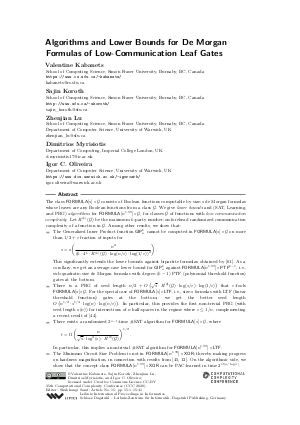LIPIcs.CCC.2020.15.pdf
- Filesize: 0.74 MB
- 41 pages

 Creative Commons Attribution 3.0 Unported license
Creative Commons Attribution 3.0 Unported license











Feedback for Dagstuhl Publishing